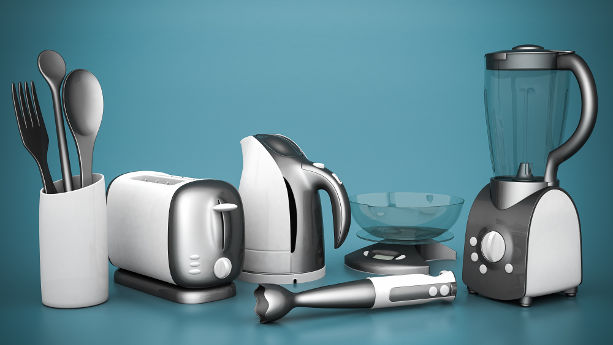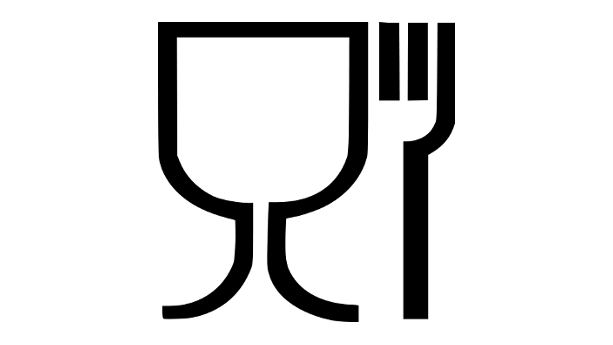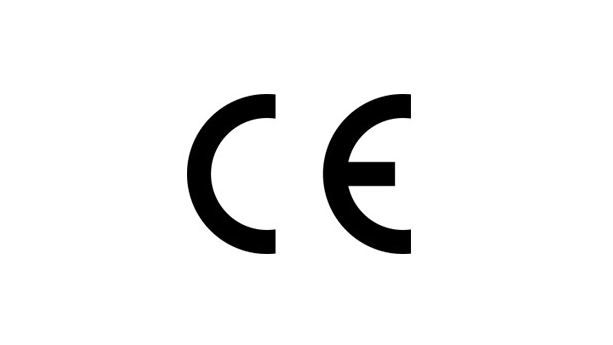
Are you planning to import and sell kitchen appliances in the European Union? Keep reading, and learn what every importer and exporter of kitchen appliances must know about food contact materials regulations, electrical safety standards, heavy metals, documentation, CE marking and much more.
Mentioned Products
- Blenders
- Fridges
- Ovens
- Toasters
- Pots and pans
- Electric steamers
Content Overview

FREE CONSULTATION CALL (US, EU & UK)
- Request a free 30-minute call with Ivan Malloci to learn how we can help you with:
- Find product requirements
- Certification and labeling
- Lab testing
EU Food Contact Materials Framework Regulation
The EU Food Contact Materials Framework Regulation applies to kitchen appliances that contain food contact materials (FCMs) such as metals and plastic. Importers must ensure that the FCMs of kitchen appliances will not pose harm to users.
Restricted substances
The EU sets limits to the level of certain substances for FCMs, including metals, additives, and polymer processing aids. As such, the level of restricted substances in your kitchen appliances shall comply with the FCM framework regulation.
Third-party testing companies can help you identify whether your kitchen appliances are compliant. They also provide guidelines for other applicable standards for your product.
FCM lab testing
Many leading testing companies such as Bureau Veritas, Intertek and SGS, provide FCMs lab testing for kitchen appliances. Third-party testing is the only way to ensure compliance when import and sell kitchen appliances in the European Union. Therefore, we recommend importers to get their products lab tested before importing them.
Testing costs
FCM test starts from $200 to $300 per product and material. The final cost may change subject to different product specifications.
Declaration of Compliance (DoC)
When you are importing kitchen appliances and other FCM products, you must self-issue a DoC document that contains the information about the product, applicable standards and more, including:
- Company
- Address
- Product name
- Date
- List of EU FCM regulations/standards
- Types of food or beverage the FCM product is made for
- Treatment (e.g. storage, time and temperature)
Read more
Click here to learn more about how to issue a DoC for your products.
Product Traceability
Importers shall include a tracking label on kitchen appliances products. We recommend importers to print or engrave a permanent label with information as below:
- SKU/Product ID
- Order Number/Order Date
- Location
Example: SKU71a-1115-CN
GMP
The Good Manufacturing Practice (GMP) is to ensure that products are consistently produced and controlled according to quality standards. The GMP requirements that apply to kitchen appliances are listed below:
1. Material is pre-selected and procured for product compliance.
2. The production and quality assurance process shall follow the GMP guideline for product compliance.
3. Quality control and verification system are established with GMP requirements.
4. The production facilities must maintain a clean and hygienic manufacturing area.
You shall also establish a GMP report that includes all relevant records, such as Quality control, lab test report, order documents, certificates, and other documents.
Learn more
You can find more information about GMP in this guide.
Food Contact Material Symbol

The international symbol for “For Food Contact” contains a wine glass and a fork. Importers must attach this symbol with the text “For Food Contact” to suitable parts of kitchen appliances unless the products are obviously built to enter in contact with food or drinks, i.e. a knife or a pan.
CE Mark

Certain kitchen appliances, i.e. electrical appliances, need to carry a CE mark, to indicate whether the product is compliant with all applicable CE directives. CE mark must be affixed to the product, packaging and the user manual before the products can be sold on the EU market.
CE label file
Your supplier has no responsibility to create the CE label file for your kitchen appliances. We recommend that you should create the label file in .ai or .eps format with the information below:
- Dimensions
- Position
- Color
- Print type
Note: The CE label files should be included in your packaging and user manual files as well.
CE Documentation
Besides the CE mark, there are other requirements to ensure CE conformity. For instance, you also need to prepare documents including the Declaration of Conformity (DoC), User manual, and technical file.
Declaration of Conformity (DoC)
Importers need to draft and sign an EU declaration of conformity (DoC) for kitchen appliances. The DoC shall include information such as:
- Produce identification/SKU (e.g. Toaster Model S3)
- Product features
- Name and address of the manufacturer/importer
- List of applicable EN standards or directives
- Location
- Responsible individual
Note that market surveillances, retailers and consumers may request the DoC for compliance checking purposes.
User Manual
You should also self-issue a user manual in order to provide the user with product instructions and support information. The user manual must include information as below:
1. Installation guideline
2. Overview of the product
3. Safety instructions
4. Instructions on how to use the product
5. Instructions on how to refill and/or recharge the product (if needed) and
6. Instructions on how to dispose of the product in an environmentally friendly manner
Some kitchen appliances might not have enough space for the CE mark or WEEE mark. In this case, you shall include the marks in the user manual and its packaging.
Technical File
The technical file shall provide design, labels, packaging, material and other relevant information. Your supplier is not required to provide a technical file. Instead, it’s the importer’s responsibility to create the technical file before importing it to the European Union.
- Bill of materials
- Design drawings
- Label files
- Packaging files
- List of applied standards and directives (e.g. RoHS)
- Test reports
- QC reports
- Risk assessment
Test Report
The technical file must include test reports corresponding to the applicable EN standards or directives. In addition, you should have those standards or directives stated in the DoC.
REACH
REACH regulates chemical substances such as lead in all consumer products sold on the EU market. As such, you need to comply with REACH when importing kitchen appliances.
Note that it is illegal to sell non-compliant kitchen appliances or other consumer products in the EU.
Here are some regulated substances under REACH:
- Nickel
- Lead
- Benzidine
- Cadmium
- Mercury
Substances of Very High Concern (SVHC)
You can refer to the SVHC list to find a complete list of restricted substances. However, the European Chemicals Agency (ECHA) adds new substances to the SVHC list on a non-regular schedule, and it could be difficult for importers to keep track of those substances. Therefore, we recommend that you should book a REACH testing to help you assess product compliance.
Lab testing
Your supplier is not liable for product compliance. Therefore, it is essential to inform your supplier about REACH testing before placing orders.
Third-party lab testing is the only way to assess if your appliances are compliant. Some testing companies, such as SGS, Bureau Veritas, QIMA, and TUV, provide REACH testing for kitchen appliances. They will also help you confirm other applicable standards for the European Union market.
Testing companies
REACH test companies list:
- C&K testing
- SGS
- TUV
- QIMA
- Intertek
You can find more REACH testing companies in this guide.
Costs
REACH test cost depends on the product’s material, colors, and other requirements. In general, the REACH test cost starts at $200 per material.
Learn more
Click here to learn more about REACH lab testing.
Risks
Plastic, steel, and other food contact materials are not REACH compliant by default. You must instruct your supplier to specifically procure REACH compliant materials before importing kitchen appliances to the EU. Further, note that the same risk applies to food contact materials compliance and electrical safety.
Electronic Kitchen Appliances
Low Voltage Directive (LVD)
LVD applies to electronics with an input/output that ranges between 50 to 1000 volts AC, and 75 to 1500 volts DC. For example, LVD applies to kitchen appliances such as toasters, electrical grills, and similar appliances.
AC Adapters
LVD also applies to AC adapters with an input voltage ranging between 110 to 240V, and an output voltage of 5V. With that said, your kitchen appliances’ AC adapters must also compliant with the LVD.
LVD Test Reports
Some suppliers can provide LVD test reports for kitchen appliances. However, you must ensure that the test report is verifiable and issued by a reputable testing company.
Importing kitchen appliances without a valid LVD test report might result in heavy fines or even force-recall if the product results not compliant.
Therefore, we recommend that you book an LVD testing before importing it to the European Union. There are some leading testing companies that also provide LVD testing for kitchen appliances, such as SGS, Intertek, and QIMA.
LVD Testing Costs
LVD testing can cost a few hundred to several thousands of dollars. It depends on the complexity of the product. You can request a free quotation from testing companies for more details.
CE Mark
All LVD covered products must carry the CE marking. Also, you should also prepare a Declaration of Conformity (DoC), user manual and technical file for CE compliance.
EMC Directive
EMC directive ensures that all electrical and electronic equipment sold in the European Union market, comply with the restricted level of electromagnetic emissions. EMC applies to fixed electrical appliances such as fridges or ovens.
EMC Test Reports
You must obtain an EMC test report via either suppliers (but most suppliers cannot provide valid EMC test reports) or third-party testing companies. We recommend that you should book third-party testing for kitchen appliances to ensure compliance.
EMC Directive Testing Costs
EMC testing can cost from a hundred to several thousands of dollars, according to the complexity of the product.
CE Mark
Kitchen appliances within the scope of the EMC directive must carry the CE mark. The DoC, user manual, and technical files are also required.
RoHS Directive
Restriction of Hazardous Substances (RoHS) directive regulates certain hazardous substances in electrical and electronic equipment. As such, RoHS also covers electrical kitchen appliances such as toasters, or refrigerators.
Here are some restricted substances as listed below:
- Lead (Pb)
- Mercury (Hg)
- Cadmium (Cd)
- Hexavalent chromium (Cr6+)
- Polybrominated biphenyls (PBB)
- Polybrominated diphenyl ether (PBDE)
- Bis(2-Ethylhexyl) phthalate (DEHP)
- Butyl benzyl phthalate (BBP)
- Dibutyl phthalate (DBP)
- Diisobutyl phthalate (DIBP)
You need to ensure your kitchen appliances do not contain excessive amounts of a restricted substance, especially these substances that can be easily found in paint, batteries, and metallic parts.
RoHS Components
It is important to instruct your supplier to only use RoHS compliant components for the manufacturing process. Otherwise, the product is not considered compliant under RoHS.
RoHS Lab Testing
Not every supplier can provide RoHS test reports. Therefore, we suggest that you should book third-party lab testing for your kitchen appliances. RoHS testing starts at around $10 per component. The overall cost depends on the complexity of your product.
Here are some RoHS testing companies for kitchen appliances:
- QIMA
- SGS
- Bureau Veritas
- TUV
- Intertek
CE Mark
Electrical and electronic kitchen appliances must carry the CE mark. Further, you should also issue the DoC, user manual, and technical files as required.
RoHS Symbol
You might have seen various RoHS symbols on some products; however, such a symbol has no legal value. It is commonly used to distinguish components that are RoHS compliant.
Radio Equipment Directive
The Radio Equipment Directive (RED) covers all radio, Wi-Fi, RFID, Bluetooth, 3G, LTD, and 5G enabled devices. Kitchen appliances with any of those features will need to comply with RED. Here are some examples:
Devices
- Ice maker with Wi-Fi
- Steam oven with Bluetooth
- Toaster with Bluetooth
RED Test Reports
Only a few electronics manufacturers can provide RED test reports. For smart kitchen appliances and similar products, we suggest that you should book third-party lab testing as this is the only method to assess compliance. You can book RED testing via companies such as SGS, Intertek, and TUV.
RED Testing Costs
The cost of a RED test is mainly a function of the complexity of the product. Usually, the cost ranges from a few hundred to several thousands of dollars.
CE Mark
RED is a CE Marking Directive. As such, you must carry the CE marking for smart kitchen appliances. Also, you must issue a DoC, user manual and technical file as required.
Directive 94/62/EC: Packaging Regulations
Directive 94/62/EC restricts certain substances in product packaging. As such, importers must pay attention to packaging compliance too. Here are an overview of packaging materials and waste requirements:
Heavy Metals Restrictions
Directive 94/62/EC sets limit to certain heavy metals such as lead, mercury, and cadmium present in packaging. Third-party testing is the only way to verify whether your packaging material meets the requirements.
Many testing companies such as QIMA and SGS, provide packaging materials testing. You can also request a free quotation for more details.
Additional Packaging Information
1. Packaging material should be built to simplify material recycling, reuse, and collection purposes.
2. Compliance marks such as CE marking should be also printed on the product packaging.
Amazon Europe Compliance Requirements
Amazon has a strict policy on product compliance. Kitchen appliances must comply with all mandatory directives such as RED and EMC to get approval from Amazon. Amazon also has a history of requiring voluntary standards compliance from third-party sellers.
We suggest that you should read through the kitchen appliances requirements in the Amazon Seller Central before importing to the European Union.
How does Amazon check product compliance?
Amazon may request you to send all relevant documents including certificates, test reports, and even invoices for compliance checking. Note that they can request these documents at any time, therefore, you should prepare all relevant documents before importing kitchen appliances in the European Union.
What can happen if we sell non-compliant kitchen appliances on Amazon?
Amazon can remove your products from their website’s listings for non-compliant reasons. They can even suspend your Amazon account. From our experiences, Amazon usually focuses on specific SKUs, when checking for compliance.




















Hi,
We are a start-up company that produces labels which is TTI time and temperature indicators.
A potential customer from Europe wants to use the labels on a food that is placed in an oven to be heated to 250 degrees. What tests are required to ensure that it is safe to use, not in terms of potential risk to food, but potential risk to the oven or the environment (for example. it is not flammable or does not release toxic gas during the heat process, etc.)
Impressed with your site and informative posts. I will upload an inbound link & bookmark this website. Regards, Reader.